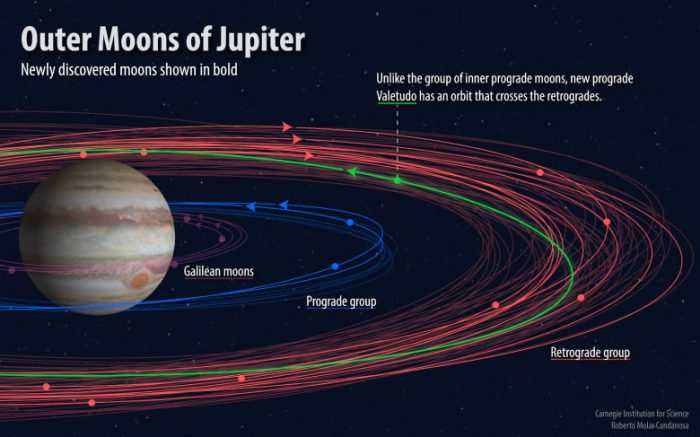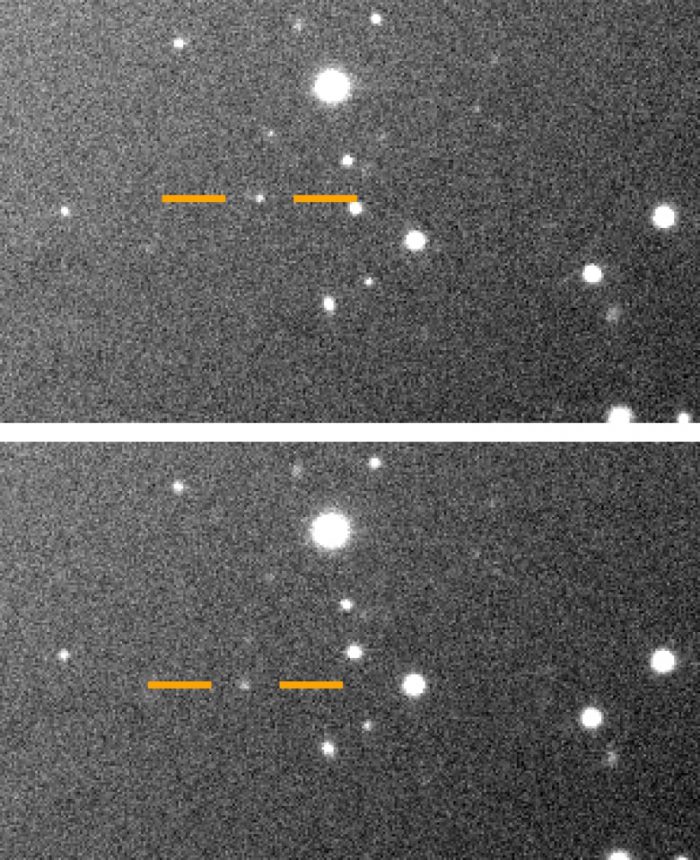You know, sometimes, it's easy to forget just how simple a relationship Earth has with the Moon. Think about it. It's called "the Moon" because there's just one of them.
When we're growing up, it's easy to think that this is just how planet/moon systems work. Like using a ticket for a train ride (one ticket = one ride!), each planet gets one moon. End of discussion.
Of course, the more we learn about the solar system, the quicker we understand that this is not the case. Mercury and Venus? Zero moons. Mars? Two. Then move past the asteroids belt and it gets waaaaay out of control.
Gas giants like Saturn and Jupiter have dozens of moons. Saturn has 62, including ones like Titan that are planet-sized themselves. For a long time, Jupiter was holding a slim lead with 67. But a recent discovery has blown that margin wide open.
Turns out, Jupiter has 12 more moons than we originally thought.
"I thought they were just donut crumbs!"
The Cerro Tololo Observatory in Chile, where researchers made their discovery. (Getty Embed)
79 moons?! Yep, that's the story. When the number is that high, I guess you can understand how astronomers might miss one or two. But not noticing 12 until now? What gives? Did someone just forget to dust the telescope lens?
In truth, it wasn't removing dust from the lens but using a new lens entirely that led to the discovery. Back in early 2017, a team of researchers from the Carnegie Institution for Science in Washington, D.C. were looking for the possible fabled "Planet Nine" that some think might exist beyond Pluto. To do this, they were using something called the Dark Energy Camera, which was attached to a telescope at the Cerro Tololo Observatory in Chile.
This super powerful telescope didn't find the rumoured planet (yet!), but it did come across a surprising group of small objects near Jupiter. But what were they? Just asteroids passing through?
Feeling fine at 79

There are three major groups of moons orbiting Jupiter...and not all of them are moving in the same direction! (Carnegie Institution for Science)
Another year of research was needed before the team could say for sure that Jupiter was the proud owner of a dozen more moons than we previously thought. Their ability to hide until now mostly came down to their small size. Each is only 1 to 3 kilometres (0.6 to 1.8 miles) wide.
The 12 new moons are also pretty far from Jupiter. They are part of the outer most group of moons—far from the larger and more well-known Galilean moons like Io and Europa. They are also what are known as retrograde moons. This means that they orbit in the opposite direction to Jupiter's rotation. That is cool, except for the fact that one of them, Valetudo, is prograde. It orbits with Jupiter's rotation ... and is probably going to collide with one of its lunar siblings some day!
Poor Jupiter. Not only does it have 12 more kids than it thought, it has to worry about one of them who keeps trying to headbutt his brothers and sisters. Yikes!
Kind of makes you grateful once again for the easy-going relationship we've got over here. Goodnight, Moon. Let's just keep things as they are, okay?
 Meet Valetudo, one of 12 new moons discovered around Jupiter. As you'll find out, this one is a handful... (Carnegie Institution for Science)
Meet Valetudo, one of 12 new moons discovered around Jupiter. As you'll find out, this one is a handful... (Carnegie Institution for Science)










Wow ❗
-Insert Earthchan meme here-
Enceladus is a moon of Saturn not Jupiter
Thank you, Daniel. Mistake corrected—we appreciate it.